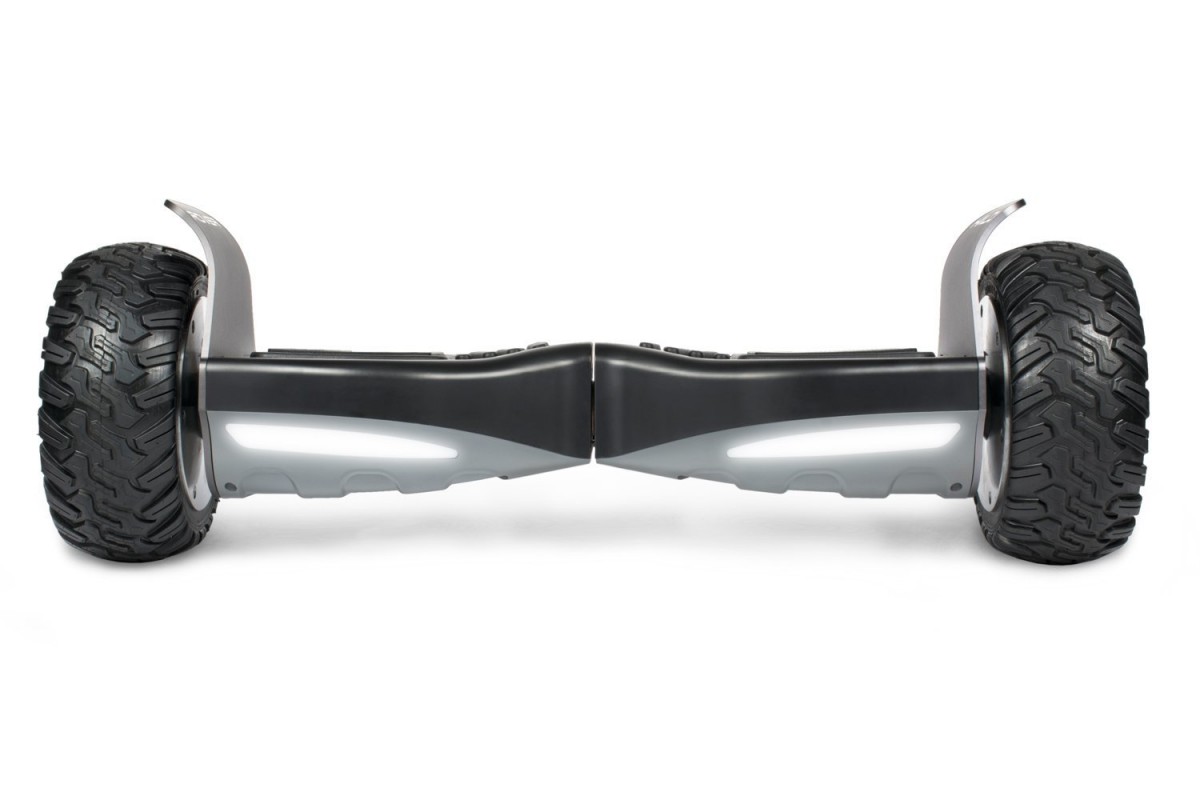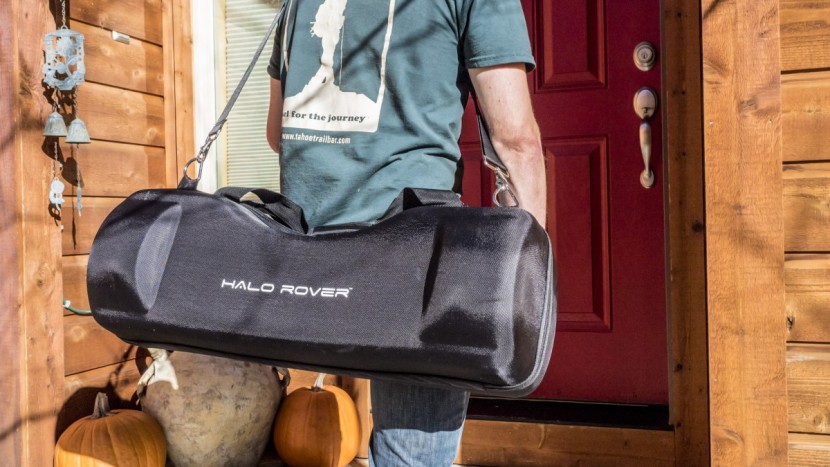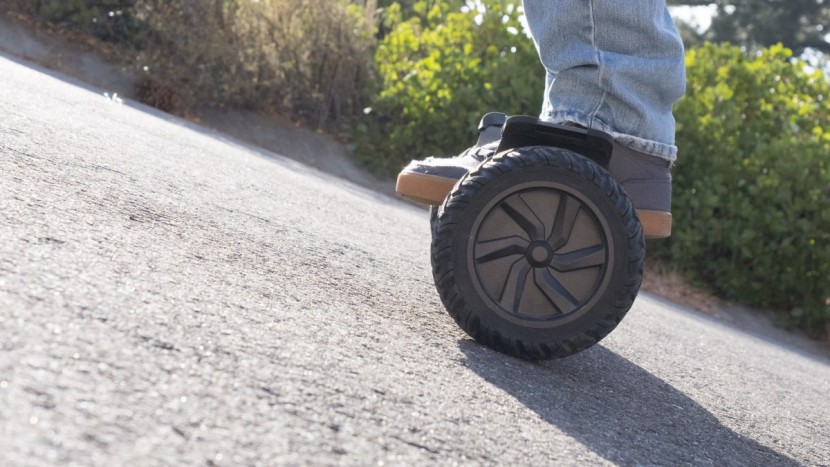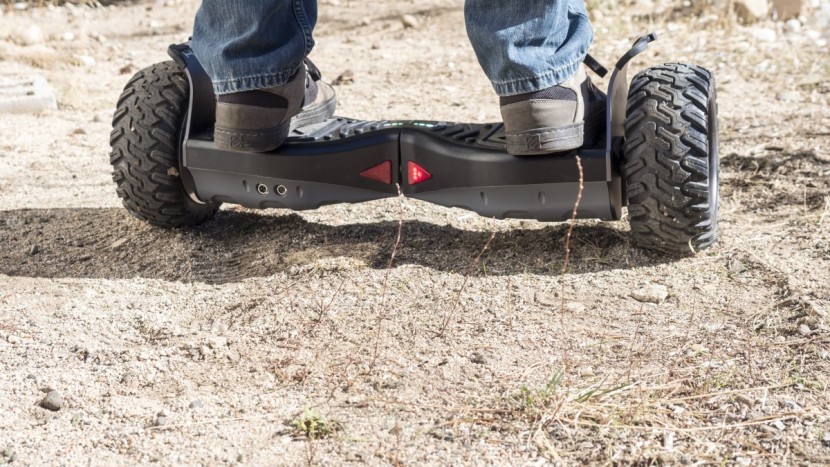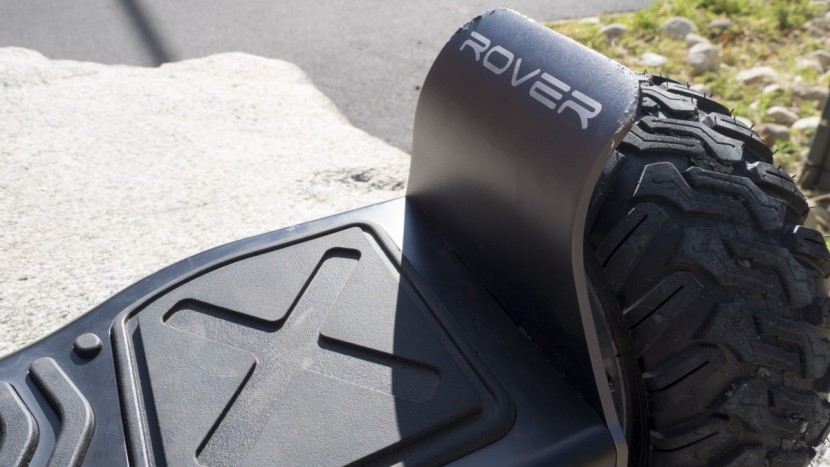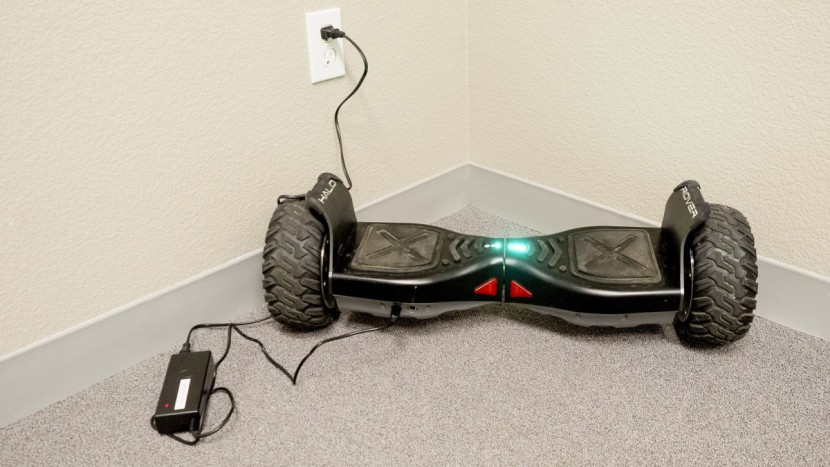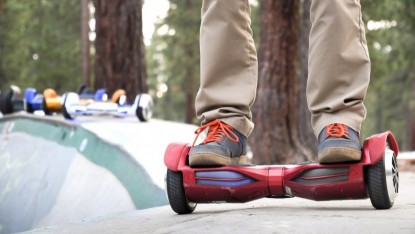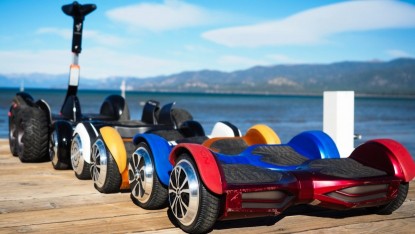Halo Rover Review
Our Verdict
Our Analysis and Test Results
The Halo Rover is a good pick if most of your hoverboarding needs involve going off-road. This model has 8.5" knobby rubber tires that are ideally suited for driving through the grass or on the trail (local regulations permitting). The main gripe that testers had was the pushback (back tilting of the standing platform) that the Rover issues when at or near top speed.
All of the testing conducted by TechGearLab is direct comparison testing. What this means is that all the products within a review are run through the same assessments so that our review staff can make apples-to-apples appraisals of each product's performance. This method of reviewing products takes the guesswork out of shopping because all statements made about a given product are structured to be relative to the other products in the review. The hoverboard evaluation is structured around four categories or metrics. The detail of these metrics and how the Rover sized-up in each is discussed below.
Fun Factor
Fun factor is simply an assessment of the characteristics of a board that allows the rider to have a good time. These are max speed, maneuverability, stability, comfort, weight, and add-ons such as LED lights, onboard speakers, Bluetooth connectivity, and third party accessories. In large part, our assessment of a board's fun factor is based on the feedback issued by our professional testers. Our testers spend several days in our built-to-purpose obstacle course pushing these boards to their limit and offered deep insights into the character of each. Overall the Rover did well in this series of tests, earning itself an above-average score.
The Rover was well-received by our testers. Many commented on how stable the board felt in the obstacle course, particularly when executing the rapid back and forth exercise. Conversely, this model is fairly wide, and the consensus was that it was a little harder (thus, less fun) to do sharp turns and spins. However, the biggest complaint was that, when at or near-maximum speed, the Rover would “pushback” the rider by tilting back the standing platform. This feature is obnoxious and uncomfortable, even in small doses.
The Halo Rover is currently available in four colors: black, white, blue and pink. This board hit a top speed of 8.83 mph in our tests, comparing well with the manufacturer stated top speed of 9 mph. Unfortunately, this board will not fit in third-party accessories — at least not any that we found — but our model did come with a carrying case.
Additionally, this board has onboard Bluetooth speakers and a companion app that displays real-time statistics such as speed and battery life. One downside to this board is that, at 31.9 lbs, it is quite heavy.
Outdoor Capabilities
The outdoor capabilities metic is all about how these boards perform when off flat and smooth surfaces. As such, we ran them over dirt, sand, and grass. We ran them up and down a steep (14% grade) hill and cruised the roughest pavement we could find. Traversing broken ground is where the Rover comes alive.
The Halo Rover did well across the board in these tests, performing exceptionally well rolling over cracks and bumps in the road, as well as traversing grass. This board also did a good job of moving over hard-packed dirt and sand, feeling just like it was on pavement. Finally, the Rover dispensed with the hill climb and descent without so much as breaking a sweat.
Support
Making up 20 percent of a board's total score, support is a particularly important measure of a product's overall quality. These boards can take a beating during regular, routine use. When compared to other electric vehicles we've tested over the years, a disproportionate amount of these boards required maintenance and/ or guidance from the manufacturer to keep them on the road. As such, we used the support metric to evaluate the quality of support offered by the manufacturer. This metric also includes assessments of the coverage provided in the warranty and of the board's cosmetic durability as demonstrated by the physical effects of our field testing. The Halo Rover delivered an average performance in this series of tests.
To assess the quality of a company's customer support, we made contact with them and posed a basic technical question. We timed their response and rated the helpfulness of that response. While Halo does list a phone number on their website, when we called it we were told that it was for sales related questions only. We were redirected to an email address for technical support. In response to our email, we received a form letter asking us to send in a video documenting our issue. After jumping through this unnecessary hoop, we finally received a perfunctory response that required us to troubleshoot the problem with the owner's manual. In the end, they did provide the information necessary to solve our problems; it just took longer than some of the other manufacturers. Halo also offers a “12-month worry-free guarantee” to cover any manufacturer defects.
As for durability, the Rover held up quite well to our rigorous testing process. It received minor scratches, and we lost the cover to the power button somewhere along the way. Additionally, the board's rubber bumpers are prone to falling off. It was unclear whether this was a design feature or a bug, but they snapped back on with little difficulty.
Battery
The final component of our testing is an evaluation of the battery that powers these boards. This evaluation is broken up into three parts: range, run time, and recharge time. The Halo Rover is above average in this metric. The board was able to traverse 7.4 miles on flat, smooth pavement before the battery was depleted to the point that it would no longer self-balance. While this tested how far one can go in ideal conditions, we wanted to know how long one could play on the board as this is what most riders will be doing.
To simulate play in a reproducible fashion we used a standardized obstacle course that included tight turns, a slalom course, back and forth segments, and a straightaway. We ran each board through the course until the battery was dead. Here too the Halo Rover did above-average lasting for 1 hour and 40 minutes. Finally, the board took about 2 hours and 40 minutes to charge, right in line with the expected 2-3 hours as per the manufacturer's recommendations.
Value
While the Halo Rover is a solid board, it is not the best value out there. There are less expensive, better performing boards available, including one suited for off-road use.
Conclusion
The Halo Rover has strong outdoor capabilities, and it is relatively fun to ride. However, we had a less than ideal experience with the customer support staff. Moreover, the Rover's list price is higher than better performing products.


